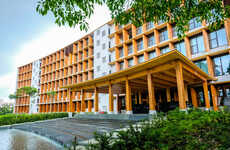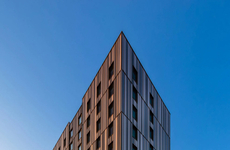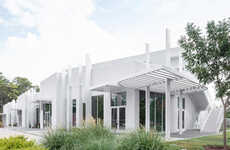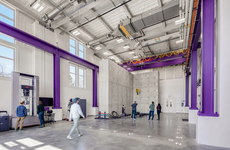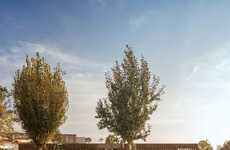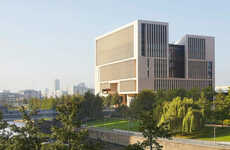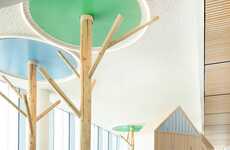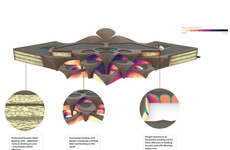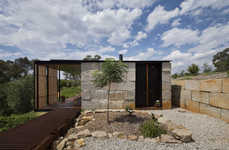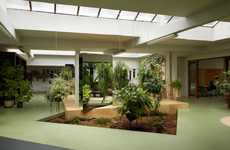
This Tel Aviv University Building is the Greenest in the Middle East
Rahul Kalvapalle — August 14, 2014 — Eco
References: en-environment.tau.ac.il & gizmag
Tel Aviv University's Porter School of Environmental Studies is truly practicing what it preaches -- the school's newly inaugurated building is the first LEED Platinum-certified building in Israel and the greenest building in the Middle East.
The building was designed by Geotectura Studio and Axelrod Grobman Architects. In addition to provide educational spaces, the building is intended to function as an educational installation in itself, wherein visitors can examine the environmental technologies installed within it.
The building's education and public spaces include an auditorium, atrium, classroom, lecture halls, meeting rooms and research labs.
This Tel Aviv University building features a special 'EcoWall' that provides protection from the sun in the building's atrium, but also takes advantage of its south-facing orientation by using solar panels to power air conditioning efforts.
The building was designed by Geotectura Studio and Axelrod Grobman Architects. In addition to provide educational spaces, the building is intended to function as an educational installation in itself, wherein visitors can examine the environmental technologies installed within it.
The building's education and public spaces include an auditorium, atrium, classroom, lecture halls, meeting rooms and research labs.
This Tel Aviv University building features a special 'EcoWall' that provides protection from the sun in the building's atrium, but also takes advantage of its south-facing orientation by using solar panels to power air conditioning efforts.
Trend Themes
1. LEED Platinum-certified Buildings - The trend towards constructing green buildings that meet LEED Platinum certification standards, which provide environmental and economic benefits to building occupants and the surrounding community.
2. Sustainable Architecture - The trend towards designing and constructing buildings with environmentally responsible materials, energy-efficient systems, and green spaces, which promote human health, well-being, and cultural sustainability.
3. Smart Buildings - The trend towards incorporating advanced technologies, such as Internet of Things (IoT) devices, artificial intelligence (AI), and machine learning, into building systems to optimize their performance, reduce energy consumption, and improve occupant comfort and safety.
Industry Implications
1. Construction - The construction industry can benefit from developing sustainable building practices, using green materials, and implementing smart technologies to meet the growing demand for environmentally responsible and energy-efficient buildings.
2. Architecture - Architects can lead the way in designing sustainable buildings that integrate the latest green technologies and practices tailored to local environmental conditions and cultural contexts.
3. Education - Educational institutions can foster awareness and engagement in sustainable practices by incorporating green building designs and technologies into their campus infrastructure and curriculum.
4.1
Score
Popularity
Activity
Freshness

